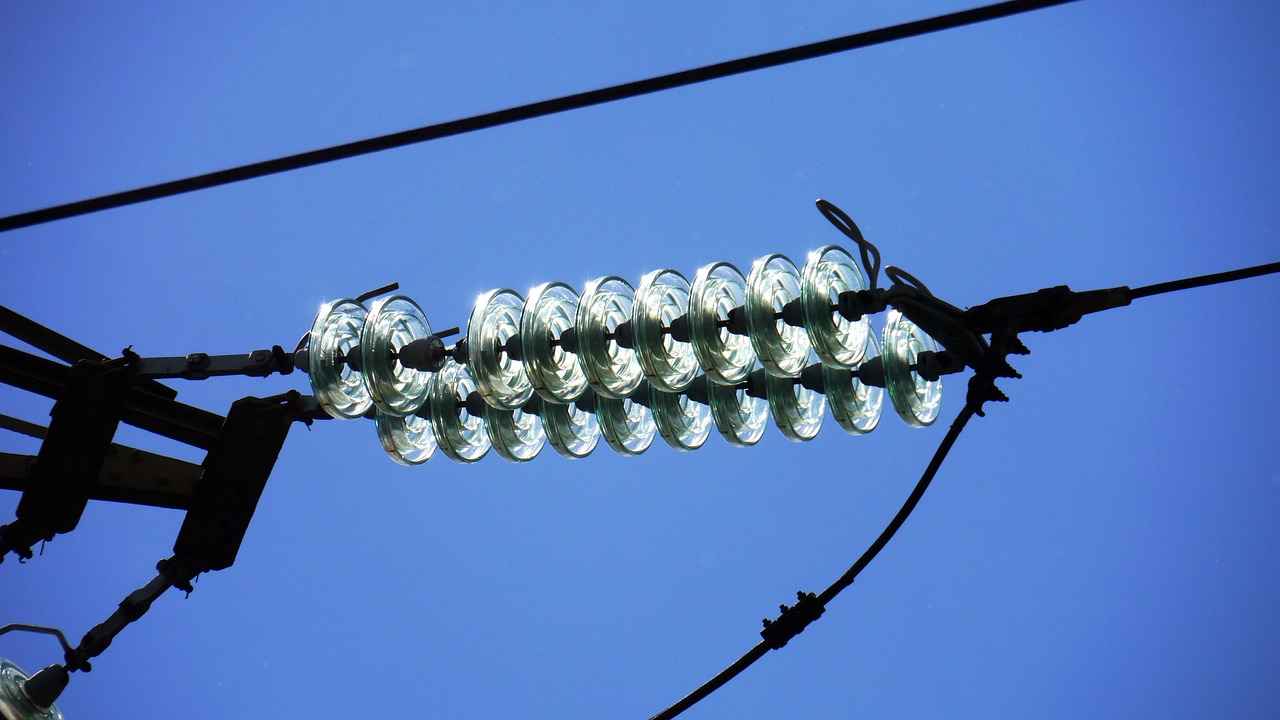This article provides a comprehensive guide on , ensuring optimal vehicle performance and longevity. Understanding the process is essential for maintaining your vehicle’s health and avoiding costly repairs.
Checking transmission fluid is crucial for several reasons. It plays a vital role in lubricating the transmission components, ensuring smooth gear shifts and preventing wear and tear. Regular checks can help detect leaks or contamination early, thus averting major transmission issues down the line. By maintaining the right fluid level and quality, you can significantly enhance your vehicle’s performance and lifespan.
- Dipstick: Essential for measuring fluid levels.
- Funnel: Useful for adding fluid if necessary.
- Clean Rag: Helps in wiping the dipstick and checking fluid condition.
In the Honda Accord, the transmission fluid dipstick is typically located near the back of the engine bay. Look for a brightly colored handle, often labeled for easy identification. If you have trouble locating it, refer to your owner’s manual for specific guidance.
To accurately check the fluid level, follow these steps:
- Start your engine and let it warm up for a few minutes.
- Shift through all gears to circulate the fluid.
- With the engine running, pull out the dipstick and wipe it clean.
- Reinsert the dipstick fully, then remove it again to check the fluid level against the marked indicators.
The color of your transmission fluid can tell you a lot about its condition. Healthy fluid is typically bright red, indicating good quality. If the fluid appears dark brown or has a burnt smell, it may be time for a replacement.
The odor of transmission fluid is another indicator of its health. A burnt smell can signal overheating, which may lead to serious transmission damage. If you notice this odor, it is essential to investigate further.
It is generally recommended to change your transmission fluid every 30,000 to 60,000 miles. However, this can vary based on driving conditions, such as frequent stop-and-go traffic or towing heavy loads. Always consult your owner’s manual for specific recommendations.
If your fluid level is low, adding transmission fluid is a straightforward process:
- Ensure you have the correct type of transmission fluid as specified in your owner’s manual.
- Using a funnel, pour the fluid into the dipstick tube.
- Recheck the fluid level with the dipstick to ensure it is within the recommended range.
Using the right transmission fluid is critical for optimal performance. Honda recommends specific fluids for their vehicles. Always consult your owner’s manual to ensure compatibility and avoid using generic fluids that may not meet the necessary standards.
Be aware of common issues such as leaks, fluid contamination, and low fluid levels. Identifying these problems early can help maintain your Accord’s transmission health and prevent costly repairs.
It is advisable to check your transmission fluid every few months or before long trips. Regular checks help prevent potential transmission issues and ensure smooth operation.
If you encounter persistent issues with your transmission fluid, it is wise to seek professional assistance. Certified mechanics can provide thorough diagnostics and repairs, ensuring your Honda Accord remains in top condition.

Why is Checking Transmission Fluid Important?
Checking your vehicle’s transmission fluid is a crucial aspect of automotive maintenance that should not be overlooked. Transmission fluid serves multiple essential functions, including lubricating the moving parts of the transmission, facilitating smooth shifting, and helping to cool the transmission system. Understanding why checking transmission fluid is important can help you avoid costly repairs and ensure your vehicle operates at peak performance.
When the transmission fluid level is low, it can lead to several issues. The most immediate concern is that the transmission may not shift gears smoothly, resulting in jerky movements or slipping out of gear altogether. Over time, insufficient fluid can cause overheating, leading to serious damage to the transmission components. This can result in expensive repairs or even complete transmission failure.
The quality of transmission fluid is just as important as its level. Fresh, clean fluid is typically a bright red color and has a slightly sweet smell. If the fluid appears dark brown or has a burnt odor, it is an indication that it may be contaminated or degraded. Using poor-quality fluid can lead to increased friction and wear on transmission parts, ultimately compromising performance and longevity.
- Fluid Leaks: Puddles of red or brown fluid under your vehicle can indicate a leak.
- Unusual Noises: Grinding or whining sounds when shifting gears may signal low fluid levels.
- Warning Lights: Dashboard warning lights related to the transmission should never be ignored.
It is recommended to check your transmission fluid every few months or before embarking on long trips. This proactive approach can help identify potential issues before they escalate. Additionally, following the manufacturer’s guidelines in your owner’s manual can provide specific recommendations based on your driving habits and conditions.
Absolutely! By regularly checking your transmission fluid, you can catch problems early, which can save you significant amounts in repair costs. Preventive maintenance is always less expensive than dealing with major repairs caused by neglect. Therefore, taking the time to perform these checks can lead to a longer-lasting and more reliable vehicle.
If you notice any issues during your fluid check, such as low levels or poor quality, it’s essential to take action promptly. Adding the correct type of transmission fluid can resolve low levels, but if the fluid appears contaminated or has an unpleasant odor, a complete fluid change may be necessary. In such cases, consulting a professional mechanic is advisable to ensure that the problem is properly diagnosed and addressed.
In summary, understanding the significance of checking transmission fluid is vital for maintaining your vehicle’s performance. Regular checks not only help prevent costly repairs but also ensure that your transmission operates smoothly and efficiently. By being proactive and attentive to your vehicle’s needs, you can enjoy a safer and more reliable driving experience.

What Tools Do You Need to Check Transmission Fluid?
Checking your vehicle’s transmission fluid is a crucial aspect of maintenance that can significantly affect its performance and longevity. To ensure that this process is efficient and effective, it is important to gather the right tools beforehand. Below, we will explore the essential tools needed for checking transmission fluid in your Honda Accord, along with their specific functions.
- Dipstick: The dipstick is a fundamental tool for checking the transmission fluid level. It allows you to accurately gauge the amount of fluid present and assess its condition. Typically, the dipstick is marked with indicators that show the ideal fluid levels.
- Funnel: A funnel is crucial when adding transmission fluid. It helps prevent spills and ensures that the fluid is poured directly into the dipstick tube without any mess. Using a funnel also minimizes the risk of introducing contaminants into the transmission system.
- Clean Rag or Cloth: A clean rag is essential for wiping the dipstick after checking the fluid level. This step is important to ensure that you get an accurate reading. Additionally, a clean rag can be used to wipe any spills or excess fluid around the dipstick area, maintaining cleanliness in your engine bay.
- Gloves: While not strictly necessary, wearing gloves can help protect your hands from potential irritants in the transmission fluid. It also keeps your hands clean and free from any contaminants that may be present in the engine bay.
- Flashlight: A flashlight can be invaluable, especially if you are working in a dimly lit garage or at night. It helps illuminate the area around the dipstick, allowing for better visibility when checking fluid levels and conditions.
- Owner’s Manual: Always refer to your Honda Accord’s owner’s manual for specific recommendations regarding the type of transmission fluid to use and the correct procedure for checking it. This ensures that you are following the manufacturer’s guidelines and maintaining your vehicle properly.
Having these tools on hand not only makes the process of checking transmission fluid easier but also enhances the accuracy of your assessment. Regularly checking your transmission fluid can help you identify potential issues before they escalate, ultimately saving you time and money on repairs.
In summary, gathering the right tools is essential for an efficient fluid check. With a dipstick, funnel, clean rag, gloves, flashlight, and your owner’s manual, you will be well-equipped to perform this important maintenance task. Taking the time to ensure your transmission fluid is at the proper level and in good condition will contribute to the overall health of your Honda Accord.

How to Locate the Transmission Fluid Dipstick?
Locating the transmission fluid dipstick is an essential step in maintaining your Honda Accord’s performance. The dipstick allows you to check the fluid levels and condition, which are critical for the smooth operation of your vehicle’s transmission system. Understanding where to find this dipstick can save you time and ensure that you are performing necessary maintenance correctly.
In most Honda Accords, the transmission fluid dipstick is typically found near the back of the engine bay. It is designed to be easily accessible, allowing drivers to perform routine checks without hassle. Look for a brightly colored handle, often labeled with a transmission symbol or the words “transmission fluid.” This labeling helps in quickly identifying the dipstick amidst other components in the engine bay.
- Open the Hood: Start by ensuring that your vehicle is parked on a level surface. Once parked, pull the hood release lever inside your car and lift the hood.
- Secure the Hood: Use the prop rod to secure the hood in an open position to prevent it from closing while you work.
- Locate the Dipstick: Stand in front of the engine bay and look towards the back. The dipstick should be visible, typically near the firewall. If you have trouble spotting it, refer to your owner’s manual for specific diagrams or images.
Finding the dipstick is crucial because it allows you to monitor the transmission fluid levels. Low fluid levels can lead to overheating and damage to the transmission, resulting in costly repairs. By regularly checking the fluid, you can ensure that it is at the appropriate level and in good condition.
After locating the dipstick, the next step is to check the fluid level. Pull the dipstick out, wipe it clean with a lint-free cloth, and then reinsert it fully. Remove it again to check the fluid level against the marked indicators on the dipstick. This simple process can help you assess whether your transmission fluid needs to be topped off or replaced.
- Check When Warm: For the most accurate reading, check the fluid level when the engine is warm, as this allows the fluid to expand and provide a more precise measurement.
- Avoid Overfilling: If you need to add fluid, be cautious. Overfilling can lead to foaming and erratic shifting.
- Consult the Manual: Always refer to your owner’s manual for specific instructions and recommendations regarding your Honda Accord’s transmission fluid.
In addition to checking the level, it is important to assess the condition of the transmission fluid. Healthy fluid should be a vibrant red color and should not have a burnt smell. If the fluid appears dark or brown, or if it has a burnt odor, it may be time for a change.
Knowing how to locate and check the transmission fluid dipstick in your Honda Accord is a fundamental part of vehicle maintenance. Regular checks can prevent potential transmission issues and ensure your car runs smoothly for years to come.

How to Check the Transmission Fluid Level?
Checking the transmission fluid level is a crucial maintenance task that every Honda Accord owner should perform regularly. Proper fluid levels ensure that your vehicle’s transmission operates smoothly, which in turn affects overall performance and longevity. Below is a detailed guide on how to effectively check the transmission fluid level in your Honda Accord.
To accurately check the transmission fluid level, follow these simple steps:
- Prepare Your Vehicle: Start by parking your Honda Accord on a level surface. This ensures that you get an accurate reading of the fluid level. Turn off the engine and allow it to cool down for a few minutes.
- Locate the Dipstick: Open the hood and locate the transmission fluid dipstick. In most Honda Accords, it is situated towards the back of the engine bay and is often labeled for easy identification.
- Remove the Dipstick: Pull the dipstick out of its tube. Be careful not to let dirt or debris fall into the tube as this could contaminate the fluid.
- Wipe the Dipstick Clean: Use a clean rag or paper towel to wipe the dipstick thoroughly. This step is essential as it removes any old fluid and dirt, allowing for a more accurate reading.
- Reinsert the Dipstick: Carefully reinsert the dipstick back into the tube. Ensure it is pushed all the way down to get a proper seal.
- Check the Fluid Level: Pull the dipstick out again and observe the fluid level against the marked indicators on the dipstick. The fluid should be within the designated ‘full’ and ‘low’ marks. If the fluid is below the ‘low’ mark, you will need to add more fluid.
- Assess Fluid Condition: While checking the fluid level, take a moment to examine the condition of the fluid. Healthy transmission fluid should be a bright red color. If it appears dark or brown, it may be time to replace it.
Regularly checking your transmission fluid is vital for several reasons:
- Prevents Overheating: Adequate fluid levels help maintain optimal temperature, preventing overheating.
- Ensures Smooth Shifting: Proper fluid levels contribute to smooth gear transitions, enhancing driving comfort.
- Extends Transmission Life: Regular checks and maintenance can significantly prolong the lifespan of your transmission.
If you find that the transmission fluid level is low, you can easily add more fluid. Here’s how:
- Choose the Right Fluid: Consult your owner’s manual to determine the correct type of transmission fluid recommended for your Honda Accord.
- Add Fluid Carefully: Using a funnel, pour the transmission fluid into the dipstick tube slowly to avoid overfilling. Check the level frequently as you add fluid.
- Recheck Fluid Level: After adding fluid, recheck the level using the dipstick to ensure it is within the acceptable range.
By following these steps, you can effectively check and maintain the transmission fluid level in your Honda Accord, ensuring smooth operation and extending the life of your vehicle.

What is the Ideal Transmission Fluid Color?
When it comes to maintaining your Honda Accord, understanding the condition of transmission fluid is crucial. One of the easiest ways to assess this condition is by observing its color. The ideal transmission fluid color is a key indicator of its health and performance.
Healthy transmission fluid is typically a bright red hue. This vibrant color signifies that the fluid is clean, well-maintained, and capable of lubricating the transmission components effectively. Bright red fluid indicates that the fluid has not been subjected to overheating or contamination, which is essential for optimal vehicle performance.
On the other hand, if you notice that your transmission fluid has turned dark brown or even black, this is a warning sign. Such colors usually indicate that the fluid is degraded and may contain contaminants or burnt particles. This degradation can lead to poor lubrication and increased friction within the transmission, potentially causing severe damage if not addressed promptly.
- Start by locating the transmission fluid dipstick in your Honda Accord.
- Remove the dipstick and wipe it clean with a lint-free rag.
- Reinsert the dipstick fully and then pull it out again to observe the fluid color.
It’s essential to perform this check regularly, as it can help you catch potential issues before they escalate into costly repairs.
If you find that the transmission fluid is dark or brown, it’s advisable to consider a fluid change. The general recommendation is to change the transmission fluid every 30,000 to 60,000 miles, depending on your driving conditions and habits. However, if the fluid appears degraded sooner, it may be wise to change it immediately.
While color is a significant indicator, it is not the only factor to consider. The smell of the fluid is also important; a burnt odor can indicate overheating, which may necessitate further inspection. Additionally, checking the fluid level and consistency can provide further insights into its condition.
To maintain the ideal condition of your transmission fluid, consider the following tips:
- Regularly check the fluid level and color.
- Change the fluid as recommended by the manufacturer.
- Address any leaks or issues promptly.
- Consult a professional mechanic for periodic maintenance.
In conclusion, monitoring the color of your transmission fluid is a simple yet effective way to ensure your Honda Accord remains in optimal condition. By being proactive and addressing any changes in fluid color, you can help extend the life of your vehicle’s transmission.

How to Assess the Smell of Transmission Fluid?
Understanding how to assess the smell of transmission fluid is crucial for maintaining your vehicle’s health. The scent of the fluid can provide significant insights into its condition, which is vital for the longevity and performance of your Honda Accord.
A burnt smell from transmission fluid is a warning sign that should not be ignored. This odor typically indicates that the fluid has been subjected to excessive heat, which can lead to degradation and potential damage to the transmission system. Overheating can occur due to various reasons, including low fluid levels, a malfunctioning transmission cooler, or even internal component failure. If you detect a burnt smell, it is advisable to inspect the transmission fluid immediately.
In addition to a burnt smell, transmission fluid can emit other odors that signal different issues. For instance:
- Sweet or Fruity Odor: This may indicate a coolant leak into the transmission fluid, which can lead to severe transmission damage.
- Fishy Odor: A fishy smell can suggest that the fluid has been contaminated, possibly by overheating or other chemical reactions.
- Metallic Odor: If you notice a metallic scent, it could mean that metal particles are present in the fluid, indicating wear and tear on internal components.
Regularly assessing the smell of your transmission fluid is an essential part of vehicle maintenance. It helps in early detection of potential problems, allowing for timely intervention. Ignoring these signs can lead to costly repairs and may even compromise your vehicle’s safety. By being proactive, you can ensure that your Honda Accord remains in optimal condition.
If you identify any unusual odors, it is crucial to take immediate action. Here are some steps to consider:
- Check Fluid Levels: Start by checking the transmission fluid level using the dipstick. Low fluid levels can exacerbate overheating issues.
- Inspect Fluid Condition: Look for discoloration or debris in the fluid. Healthy transmission fluid should be bright red and clear.
- Consult a Professional: If the smell persists or if you notice other symptoms like slipping gears or unusual noises, it is best to seek help from a certified mechanic. They can conduct a thorough diagnosis and recommend necessary repairs.
To minimize the risk of transmission problems, consider implementing the following preventive measures:
- Regular Fluid Checks: Make it a habit to check your transmission fluid every few months or before long trips.
- Fluid Changes: Follow manufacturer recommendations for changing transmission fluid, typically every 30,000 to 60,000 miles.
- Monitor Driving Conditions: Be mindful of your driving habits and conditions. Heavy towing or stop-and-go traffic can put additional strain on your transmission.
In summary, being aware of the smell of your transmission fluid is a simple yet effective way to monitor the health of your Honda Accord’s transmission system. Early detection of issues can save you time and money, ensuring a smoother driving experience.

When Should You Change Transmission Fluid?
When it comes to maintaining your vehicle, one of the most crucial aspects is the transmission fluid. Understanding when to change transmission fluid is essential for ensuring your car operates smoothly and efficiently. This article will delve into the factors that influence how often you should change your transmission fluid, helping you make informed decisions for your vehicle’s health.
Transmission fluid serves multiple purposes, including lubricating the moving parts of the transmission, cooling it, and ensuring smooth shifting between gears. Over time, this fluid can become contaminated or degrade, leading to potential transmission problems. Regularly changing the fluid can help prevent costly repairs and extend the life of your vehicle.
- Mileage: Generally, it is recommended to change your transmission fluid every 30,000 to 60,000 miles. However, this can vary based on the make and model of your vehicle.
- Driving Conditions: If you frequently drive in harsh conditions—such as stop-and-go traffic, extreme temperatures, or towing heavy loads—you may need to change your fluid more often.
- Fluid Quality: The condition of the fluid itself is a significant indicator. If the fluid appears dark or has a burnt smell, it is time to change it, regardless of mileage.
Regular checks of your transmission fluid can help you stay ahead of potential issues. Here’s how:
1. Check the fluid level using the dipstick.2. Assess the color—healthy fluid is typically bright red.3. Smell the fluid; a burnt odor indicates it needs changing.
Neglecting to change your transmission fluid can lead to various problems, including:
- Overheating: Old fluid loses its ability to dissipate heat effectively.
- Slipping Gears: Contaminated fluid can cause the transmission to slip, making it difficult to shift gears.
- Complete Transmission Failure: In severe cases, delaying fluid changes can lead to catastrophic transmission failure, requiring expensive repairs or replacements.
If you decide to change your transmission fluid, follow these steps:
- Warm up your vehicle and park it on a level surface.
- Locate the transmission fluid dipstick and remove it.
- Drain the old fluid and replace it with new fluid according to the manufacturer’s specifications.
- Check the fluid level again using the dipstick.
Your vehicle’s owner’s manual is an invaluable resource for understanding the specific requirements for your transmission fluid. It will provide guidance on the type of fluid to use and the recommended intervals for changes based on your driving habits.
In summary, being proactive about changing your transmission fluid can save you from significant headaches down the road. By understanding the factors that influence when to change your fluid, you can maintain your vehicle’s performance and longevity.

How to Add Transmission Fluid if Needed?
Maintaining the proper level of transmission fluid is crucial for the smooth operation of your vehicle. If you notice that the fluid level is low, it is essential to address this issue promptly to avoid potential damage to your transmission system. This section will guide you through the process of adding transmission fluid to your Honda Accord.
If you find that your transmission fluid is below the recommended level, adding fluid is a simple yet important task. Here’s a detailed step-by-step guide to help you through the process:
- Gather Your Supplies: Before you start, make sure you have the correct type of transmission fluid for your Honda Accord, a clean funnel, and a rag or paper towel. Refer to your owner’s manual for the specific fluid type recommended by the manufacturer.
- Park Your Vehicle: Ensure your car is parked on a level surface and the engine is running, allowing the transmission fluid to circulate. This will give you a more accurate reading of the fluid level.
- Locate the Dipstick: Open the hood and find the transmission dipstick, usually located at the back of the engine bay. It is often labeled and easy to identify.
- Check the Fluid Level: Pull out the dipstick, wipe it clean with a rag, and then reinsert it fully. Remove it again to check the fluid level against the marked indicators. If it’s below the minimum mark, you will need to add fluid.
- Adding Transmission Fluid: Using a funnel, carefully pour the correct type of transmission fluid into the dipstick tube. It’s important to add fluid slowly to avoid overfilling, which can lead to other complications.
- Recheck the Fluid Level: After adding fluid, wait a few moments for it to settle, then recheck the level with the dipstick. Ensure it is now within the recommended range.
- Clean Up: Wipe any spills with a rag and securely replace the dipstick. Close the hood of your vehicle.
Why is it Important to Maintain the Right Fluid Level? Maintaining the correct level of transmission fluid is essential for optimal performance and longevity of your vehicle. Low fluid levels can lead to overheating, increased friction, and ultimately, transmission failure. Regularly checking and topping off your transmission fluid can save you from costly repairs down the line.
When to Seek Professional Help? If you frequently find that your transmission fluid is low, it may indicate a leak or other underlying issues. In such cases, it is advisable to consult a professional mechanic. They can perform a thorough inspection to identify and resolve any problems effectively.
By following these steps, you can easily add transmission fluid to your Honda Accord and ensure that your vehicle continues to run smoothly. Regular maintenance and checks will not only enhance your vehicle’s performance but also prolong its lifespan.

What Type of Transmission Fluid is Best for Honda Accord?
When it comes to maintaining your Honda Accord, one of the most critical aspects is ensuring that you use the correct type of transmission fluid. Transmission fluid plays a vital role in the overall performance and longevity of your vehicle, and using the right kind can prevent potential issues down the road.
The transmission fluid serves multiple functions, including lubrication, cooling, and hydraulic operation of the transmission components. Using a fluid that does not meet the manufacturer’s specifications can lead to suboptimal performance, increased wear, and even transmission failure. Therefore, it is essential to adhere to the recommendations provided by Honda.
Each Honda Accord model may have different requirements when it comes to transmission fluid. The owner’s manual is your best resource for identifying the precise type of fluid recommended for your specific model year. Honda typically recommends using their own branded transmission fluid, known as Honda ATF-Z1 or Honda ATF DW-1, depending on the model and year.
- Overheating: Incorrect fluid can lead to inadequate cooling, resulting in overheating.
- Poor Shifting: Using incompatible fluid can cause harsh or erratic shifting.
- Increased Wear: The wrong fluid may not provide the necessary lubrication, leading to premature wear of transmission components.
To ensure you are using the correct transmission fluid, follow these steps:
- Check the owner’s manual for the recommended fluid type.
- Look for the specifications on the fluid packaging, ensuring it meets Honda’s requirements.
- If in doubt, consult a certified Honda mechanic for guidance.
Using the recommended transmission fluid can offer several benefits:
- Enhanced Performance: Ensures smooth and efficient shifting.
- Longevity: Helps extend the life of your transmission.
- Warranty Protection: Using non-recommended fluids may void your warranty.
Honda transmission fluid can typically be purchased at:
- Honda Dealerships: The most reliable source for OEM fluids.
- Auto Parts Stores: Many carry Honda-recommended fluids.
- Online Retailers: Websites like Amazon or Honda’s official site often have the right products available.
If you are uncertain about the type of transmission fluid you should use, it is always best to err on the side of caution. Consult with a professional mechanic who specializes in Honda vehicles. They can provide expert advice and ensure that your transmission fluid is both compatible and optimal for your Honda Accord.
In summary, using the correct transmission fluid is not just a recommendation; it is a necessity for maintaining the performance and reliability of your Honda Accord. By following the guidelines outlined in this article, you can make informed decisions that enhance your vehicle’s longevity and efficiency.

Common Transmission Fluid Issues in Honda Accords
Maintaining your Honda Accord’s transmission health is essential for ensuring a smooth driving experience. Common issues with transmission fluid can lead to significant problems if not addressed promptly. Being aware of these issues, such as leaks or fluid contamination, can help you identify problems early and maintain your vehicle’s performance.
- Transmission Fluid Leaks: One of the most prevalent issues is fluid leakage. If you notice red or brown spots under your car, it may indicate a leak. Regularly checking the fluid level can help you catch this problem early.
- Fluid Contamination: Contaminated fluid can result from dirt, debris, or even metal shavings entering the transmission system. This contamination can lead to inadequate lubrication and overheating, which can damage the transmission components.
- Burnt Transmission Fluid: If the fluid smells burnt or has a dark color, it may be a sign of overheating. This can be caused by excessive towing, low fluid levels, or a failing transmission cooler. It’s crucial to address burnt fluid immediately to prevent further damage.
- Foamy or Bubbly Fluid: Foaming fluid can indicate aeration due to low fluid levels or a faulty pump. This issue can severely affect the transmission’s ability to function properly, leading to erratic shifting or slipping.
- Fluid Level Issues: Maintaining the correct fluid level is vital for optimal performance. Low fluid levels can cause the transmission to overheat, while overfilling can lead to foaming and erratic shifting.
To effectively manage these issues, it is recommended to perform regular checks on your transmission fluid. This includes:
- Inspecting the fluid color and smell.
- Checking for any visible leaks under your vehicle.
- Monitoring the fluid level using the dipstick.
If you notice any of the above issues, it is advisable to consult a professional mechanic. They can perform a thorough diagnostic and recommend necessary repairs or fluid changes. Remember, early detection is key to avoiding costly repairs and ensuring your Honda Accord runs smoothly for years to come.
In conclusion, being proactive about your Honda Accord’s transmission fluid can save you time, money, and stress. Regular maintenance and awareness of common issues will contribute significantly to the longevity and performance of your vehicle.

How Often Should You Check Your Transmission Fluid?
Maintaining your vehicle’s transmission fluid is crucial for its overall health and performance. Regular checks are essential to ensure that the fluid is at the appropriate level and in good condition. But how often should you check your transmission fluid?
Transmission fluid plays a vital role in lubricating and cooling the transmission components. If the fluid level is too low or the fluid is contaminated, it can lead to serious transmission issues, including overheating and wear. Regular checks help to identify potential problems before they escalate, saving you from costly repairs.
- Every Few Months: It is advisable to check your transmission fluid every 3 to 6 months, depending on your driving habits and conditions.
- Before Long Trips: Always inspect the fluid before embarking on long journeys. This precaution helps to ensure a smooth and trouble-free ride.
- During Routine Maintenance: Incorporate fluid checks into your regular vehicle maintenance schedule, alongside oil changes and tire rotations.
While regular checks are recommended, certain signs may indicate that you need to inspect your transmission fluid more often:
- Fluid Leaks: If you notice any spots of red or brown fluid under your vehicle, it’s a sign that you may have a leak.
- Strange Noises: Unusual sounds when shifting gears can indicate low fluid levels or other transmission issues.
- Delayed Shifting: If your vehicle hesitates before changing gears, it may be time to check the fluid.
Checking your transmission fluid is a straightforward process:
- Start your engine and let it warm up for a few minutes.
- Locate the transmission dipstick, usually found near the back of the engine bay.
- Remove the dipstick, wipe it clean with a rag, and reinsert it.
- Pull it out again to check the fluid level against the marked indicators.
When assessing your transmission fluid, consider the following:
- Color: Healthy transmission fluid is typically a bright red. Dark or brown fluid indicates it may need to be replaced.
- Smell: A burnt odor can suggest overheating, which may require immediate attention.
- Texture: The fluid should feel smooth; gritty or cloudy fluid can be a sign of contamination.
In summary, checking your transmission fluid regularly is an important part of vehicle maintenance. By adhering to a schedule of checking every few months and before long trips, you can help prevent transmission problems and ensure your Honda Accord operates smoothly. If you notice any issues with the fluid, don’t hesitate to seek professional help.

Where to Seek Professional Help for Transmission Problems?
If you are facing ongoing issues with your Honda Accord’s transmission fluid, it is crucial to seek professional help. While some minor issues can be addressed at home, persistent problems often require the expertise of a certified mechanic. These professionals possess the necessary tools and knowledge to conduct a comprehensive diagnosis and provide effective repairs, ensuring your vehicle operates smoothly.
Why Choose Certified Mechanics?
Certified mechanics are trained to handle a variety of transmission-related issues. They have access to specialized diagnostic equipment that can pinpoint problems that may not be visible during a standard inspection. This level of expertise is particularly important for complex systems like the transmission, where even a small oversight can lead to significant damage and costly repairs.
Signs You Need Professional Assistance
- Fluid Leaks: If you notice red or brown fluid pooling under your vehicle, it’s a sign of a leak that needs immediate attention.
- Unusual Noises: Grinding, whining, or clunking sounds while shifting gears can indicate serious transmission problems.
- Slipping Gears: If your Accord unexpectedly changes gears or struggles to stay in gear, this could point to transmission failure.
- Warning Lights: Pay attention to any dashboard warning lights related to the transmission or engine; these should never be ignored.
Finding the Right Mechanic
When searching for a mechanic, consider the following tips:
- Check Reviews: Look for online reviews and testimonials to gauge the reputation of the mechanic or shop.
- Ask for Recommendations: Friends, family, or online forums can provide valuable insights into reliable mechanics in your area.
- Verify Credentials: Ensure that the mechanic is certified and has experience specifically with Honda vehicles.
What to Expect During a Diagnostic Visit
During your visit, the mechanic will perform a series of checks, including:
- Fluid Quality Assessment: They will check the transmission fluid for color, smell, and consistency.
- Visual Inspection: A thorough inspection of the transmission and surrounding components will be conducted to identify any visible issues.
- Diagnostic Testing: Advanced diagnostic tools may be used to read error codes from the vehicle’s computer system.
After the assessment, the mechanic will provide a detailed report of their findings, along with recommendations for repairs or maintenance. This transparency allows you to make informed decisions regarding your vehicle’s care.
Cost Considerations
The cost of transmission repairs can vary widely based on the issue’s severity and the mechanic’s labor rates. It’s advisable to obtain estimates from multiple shops to ensure you receive a fair price. Remember, investing in professional help can save you money in the long run by preventing further damage to your transmission.
In conclusion, while it may be tempting to troubleshoot transmission fluid issues on your own, seeking professional assistance is often the best course of action. Certified mechanics can provide the expertise needed to keep your Honda Accord running smoothly and reliably.
Frequently Asked Questions
- How often should I check my transmission fluid?
It’s a good idea to check your transmission fluid every few months or before embarking on long trips. Regular checks help catch any potential issues early and ensure your vehicle runs smoothly.
- What color should my transmission fluid be?
Healthy transmission fluid is typically a bright red color. If you notice that it has turned dark or brown, it might be time to consider a replacement.
- How can I tell if my transmission fluid is burnt?
If your transmission fluid has a burnt smell, it could indicate overheating or potential damage. It’s crucial to address this issue quickly to avoid further complications.
- What tools do I need to check my transmission fluid?
You’ll need a dipstick, a funnel, and a clean rag. These tools will help you efficiently check the fluid level and condition.
- When should I change my transmission fluid?
Generally, you should change your transmission fluid every 30,000 to 60,000 miles, depending on your driving habits and conditions. Always consult your owner’s manual for specific recommendations.
- What type of transmission fluid is best for my Honda Accord?
Using the right type of transmission fluid is essential for your Accord’s performance. Always refer to your owner’s manual for the recommended fluid specifications.
- Where can I get professional help for transmission issues?
If you experience persistent problems with your transmission fluid, it’s best to seek help from a certified mechanic who can provide thorough diagnostics and repairs.



